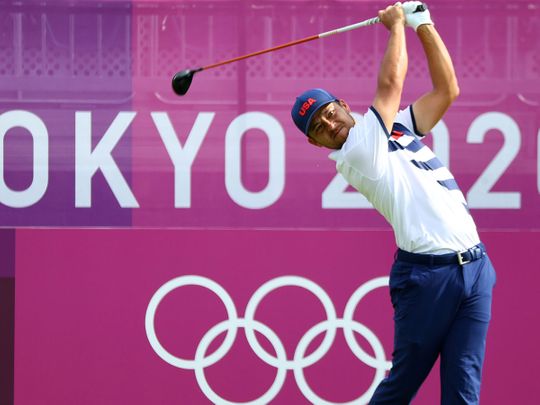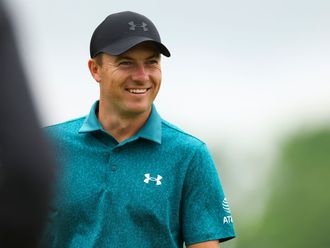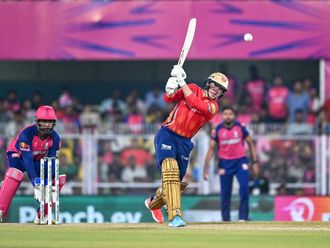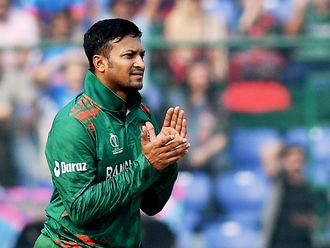
When switching on your TV to watch the Olympic Games this summer you might be surprised to see the likes of Rory McIlroy, Jon Rahm and World No.1 Scottie Scheffler beaming into your living room.
Don’t fret, you’ve not accidently put on the latest PGA Tour event! Believe it or not, golf is actually an Olympic sport – or has been for four editions of the quadrennial sporting showpiece, which will take place in Paris this year.
When was golf first played in the Olympic Games?
Golf made its first outing in the Olympics in 1900, four years after the first international Olympic Games in modern history were held in Athens. Charles Sands won the inaugural men’s competition, carding rounds of 82 and 85 to secure the Gold Medal at Compiègne Club in Paris, while Margaret Abbott won the women’s competition, which was just nine holes, after signing for a 47.
1904
Four years later, golf returned to the Olympic Games in St Louis, which was held in conjunction with the World’s Fair. Despite 12 nations from around the globe competing, the golf competition saw just two nations represented in the form of the United States (74) and Canada (3). There would also be no women’s competition due to lack of entries, with that being replaced with a 36-hole team championship, while the individual men’s championship used the match play format rather than stroke play.
Canadian George Lyon secured the Gold Medal in the Individual event, defeating Charlie Egan in the final, while the Western Golf Association took home top honours in the Team Championship.
1908
With London hosting the Games four years later, a whole host of heavyweight British golfers were expected to shine over the links at Royal St. George’s, Princes and Royal Cinque Ports. But they would never make their tee times after the Royal and Ancient Golf Club of St Andrews, commonly known as the ‘Home of Golf’, became embroiled in a dispute with the Olympic organising committee over player eligibility. That led to all British players withdrawing from the tournament just two days before it was meant to get underway, leaving Lyon, who had travelled from Canada to defend his title, as the only competitor. He was offered the Gold Medal, but he turned it down.
Golf would then disappear from the Games for 108 years, before making a return at Rio 2016.
Why was golf reintroduced to the Olympic Games?
With the help of golf stars Colin Montgomerie, Padraig Harrington and Annika Sorenstam, the most decorated player in the women’s game, the International Golf Federation (IGF) successfully made a pitch to the International Olympic Committee’s (IOC) Executive Board for golf to be reintroduced to the Games in 2009.
When making their pitch, the IGF delegation promised two things – No Major Championship would conflict with the Olympic golf competition, and the game’s star names would be available to participate in the Games. The latter of those likely proving the deal breaker with golf replacing baseball after the IOC grew frustrated with no Major League Baseball (MLB) stars featuring in the Games.
The sport’s growing participation worldwide and its values, which closely mirror Olympic ideals such as honesty and sportsmanship, were also key in securing approval from the IOC for the reintroduction of golf at Rio 2016.
2016
Despite the IGF ensuring the world’s best players would compete at Rio, a whole host of star names opted not to play in golf’s return to the Olympic Games. Jason Day, Dustin Johnson, Jordan Spieth and Rory McIlroy – the top four players in the World Ranking at the time – all chose not to make the trip to Brazil, citing scheduling issues and the Zika virus among reasons for not competing.
Despite a disappointing Strength of Field (SOF) , golf’s return to the Olympics was deemed a success with a men’s and women’s 72-hole stroke play competition taking place at the Rio de Janeiro Olympic Golf Course, built especially for the 2016 Games.
Great Britain’s Justin Rose emerged victorious in the men’s competition, beating Sweden’s Henrik Stenson by two strokes. In the women’s competition, South Korea’s Inbee Park saw off New Zealand’s Lydia Ko by five strokes to clinch the Gold Medal.
Golf finished as the seventh-most popular sport in Rio in terms of fan engagements around the world.
2020
Despite covid playing havoc around the world, Tokyo 2020, held a year later due to the pandemic, saw a lot more of the game’s biggest names play. McIlroy was the leading the way for the Republic of Ireland, while two of 2021’s men’s Major winners were in attendance in the form of Collin Morikawa and Hideki Matsuyama. Likewise, the women’s competition also boasted a strong field, with the likes of Nelly Korda, Ko and Leona Maguire all teeing up at Kasumigaseki Country Club.
The Americans would do the double, with Xander Schauffele claiming the Gold Medal in the men’s competition and Korda winning the women’s competition.
How do you qualify for the Olympic Games?
The Olympic field is restricted to 60 players for each of the men’s and women’s competitions, with the IGF utilising the Official World Golf Ranking (OWGR) to create the Olympic Golf Rankings as a method of determining eligibility.
The top-15 world-ranked players will be eligible for the Olympics, with a limit of four players from a given country. Beyond the top 15, players will be eligible based on the world rankings, with a maximum of two eligible players from each country that does not already have two or more players among the top-15.
Currently the last player to earn a spot in the field in the men’s competition is Kris Ventura of Norway, who is currently ranked 333rd in the OWGR.
There is a small chance that the UAE could have representation in the men’s competition in the form of Joshua Grenville-Wood, who began representing the country last year.
The 26-year-old is currently ranked is 454th in the OWGR, meaning he’ll need a couple of big results before the qualification ends on June 17 to stand any chance of competing in Paris.
What format is used in the Olympic Games?
Just like the DP World Tour Championship or Dubai Desert Classic, both the men’s and women’s golf competition has used the traditional 72-hole stroke play format for the last two editions and will do again this summer at Le Golf National. Unlike those events, golf at the Olympic Games does not include a cut after 36 holes, while a sudden-death play-off will take place to determine the medalists. In 2020, there was a seven-way play-off to determine the Bronze Medal in the men’s competition.











